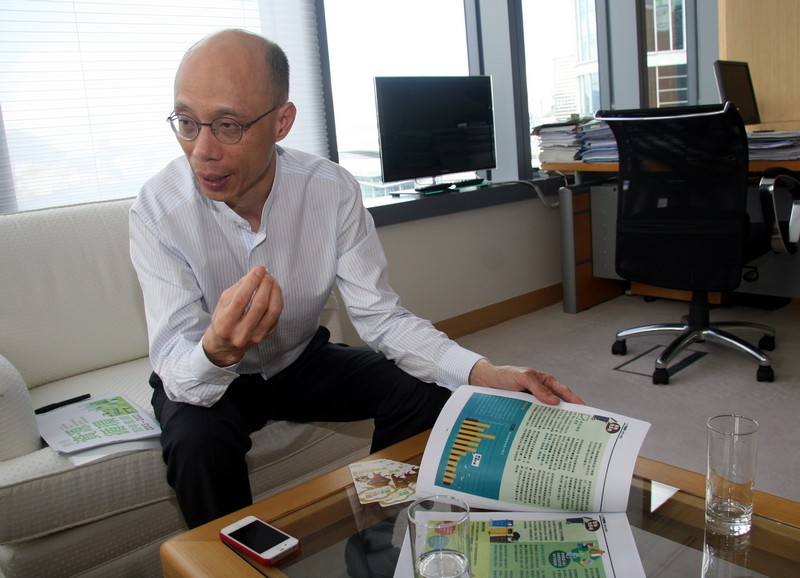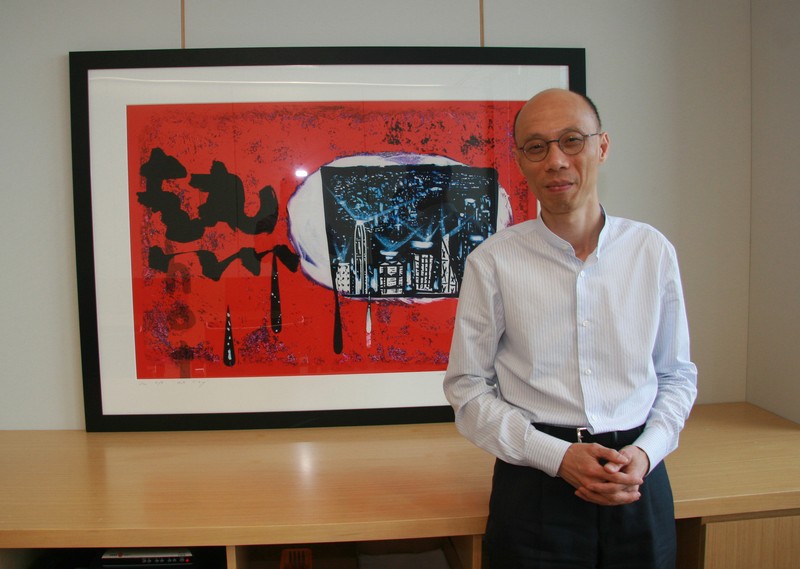HKSAR Secretary for the Environment, Mr KS Wong, speaks to PRC Magazine about building a healthier, low carbon, living-friendly city, for the betterment of people’s lives.
The HKSAR Government is committed to tackling the issues related to environmental care head on. “Dealing with air pollution and the city’s waste cannot be delayed anymore! Air quality is an issue related to population intensity and land shortage in Hong Kong. Unlike a place such as Singapore, infrequent rainy weather is a problem compounded by heavy production and development in the Pearl Delta River region. Pollution from emissions and discharge from ships in Kwai Chung and both the eastern and western sides of the city also badly affects local air quality. To tackle our air pollution, in March a Clean Air Plan Blueprint was released and the Government expects sound achievements in this area to be made by 2020.”
The second of four areas being tackled is Municipal Solid Waste (MSW). “In Hong Kong this problem is worse than many of our neighbours such as Japan, Korea and Taiwan who have all been taking measures to reduce solid waste. One quarter of Hong Kong’s MSW comes from construction waste and the city as a huge problem with food waste. Waste reduction is a basic requirement for good living and with current initiatives the Government expects to reduce MSW by 40% by 2022.”
 In May the 10-year Resource Recycling Blueprint was released. This will see the introduction of MSW charging, similar to schemes in Taiwan and Korea introduced more than 10 years ago. 80% of buildings will be equipped with recycling facilities and there is a focus to upgrade old living areas because new buildings are all now equipped with recycling facilities.
In May the 10-year Resource Recycling Blueprint was released. This will see the introduction of MSW charging, similar to schemes in Taiwan and Korea introduced more than 10 years ago. 80% of buildings will be equipped with recycling facilities and there is a focus to upgrade old living areas because new buildings are all now equipped with recycling facilities.
 To handle food waste, which currently accounts for 44% of Hong Kong’s MSW, one of the highest rates in the world, Organic Waste Treatment Facilities will be set up and efforts made to change attitudes and create a less wasteful culture. Hong Kong wastes 3,600 tonnes of food every day.
To handle food waste, which currently accounts for 44% of Hong Kong’s MSW, one of the highest rates in the world, Organic Waste Treatment Facilities will be set up and efforts made to change attitudes and create a less wasteful culture. Hong Kong wastes 3,600 tonnes of food every day.
Now the Food Wise Hong Kong campaign asks both industry and the people of Hong Kong to act together. Citizens are asked to think before buying food, cooking and ordering food and not to waste food even when food is not finished. If the campaign succeeds, 300 tonnes of food waste can be reduced daily. By comparison, if one waste treatment facility is built, only 200 tonnes can be dealt with each day.
There is also a current new move to set up Community Green Stations, the first phase will see stations set up in Shatin and Island East to recycle glass bottles and wasted electronic appliances. The next area being tackled relates to energy wastage. “We must save power and developing green architecture is an imperative response to climate change and for creating a living-friendly environment. The goal is to get in line with benchmarks executed in mainland China and green inter-departmental groups have been set up to focus on green architecture, low carbon living and power saving. A consultation was launched by the previous Government but now the timetable has been renewed again.”
The fourth area, or domain being addressed relates to nature preservation, the cohabitation of humans with nature. The goal is to establish committees for the preservation of biological diversity in response to China’s signing international covenants about preservation of biological diversity. Solid achievements are expected within two years.
In a city whose economy thrives on personal consumption is it not a paradox to encourage Hong Kong people to consume less?
“When people are more civilized they should know that it’s more important to protect the environment. And the more mature the people, the cleverer they make use of resources. E.g. people in many developed cities bring their own water bottles instead of buying disposal packs of water.”
“Actually these days our youngsters are more conscious about environmental protection. They are taught at school and the teachers teach them to practise. Now instead of eating lunch boxes, schools are practising meal portioning so students are required to use reusable containers to eat and their food waste is to be used as fertilizer. Plastic bags accounted for 10% of waste but the public has readily accepted the plastic bag levy.”
 Hong Kong people have become quite sensitive to land use and better city and land planning is needed. In Korea, food waste treatment can be in the centre of a city. Even though Hong Kong can’t copy this, there is a relevant facility in Lantau. New areas and large-scale redeveloped areas can be developed to deal with solid waste. “What all of us need is good planning before land is developed!”
Hong Kong people have become quite sensitive to land use and better city and land planning is needed. In Korea, food waste treatment can be in the centre of a city. Even though Hong Kong can’t copy this, there is a relevant facility in Lantau. New areas and large-scale redeveloped areas can be developed to deal with solid waste. “What all of us need is good planning before land is developed!”
Can buildings be part of the solution for living in a greener, less wasteful society?
“Yes! What architects can do is to build new buildings with food waste treatment facilities, which can be planned and developed in line with green facilities, including treatment plants with new district design and development. No air-con days and power availability only on certain floors are put into force now. Architecture and design can be controlled by legislation. BEAM certification and better building design is essential. Financial support to encourage the reduction of solid waste can help. So too can co-operation with the HKIA, Contractor’s Association etc., and an example of this is the Community Green Station designed by the Architectural Services Department.”
“So to summarise our mission is to build a healthy, living-friendly and low-carbon city; to reduce MSW by 40% by 2022 and to ensure waste reduction rather than using landfills, since land is insufficient in Hong Kong, and recycling, since recycling needs power. In 2011, 52% of our total waste went to landfills and 48% was recycled. By 2022 we expect that only 22% of our waste will enter landfills, waste converted to energy will account for 23% and the amount of our waste that will be recycled will increase to 55%.”












